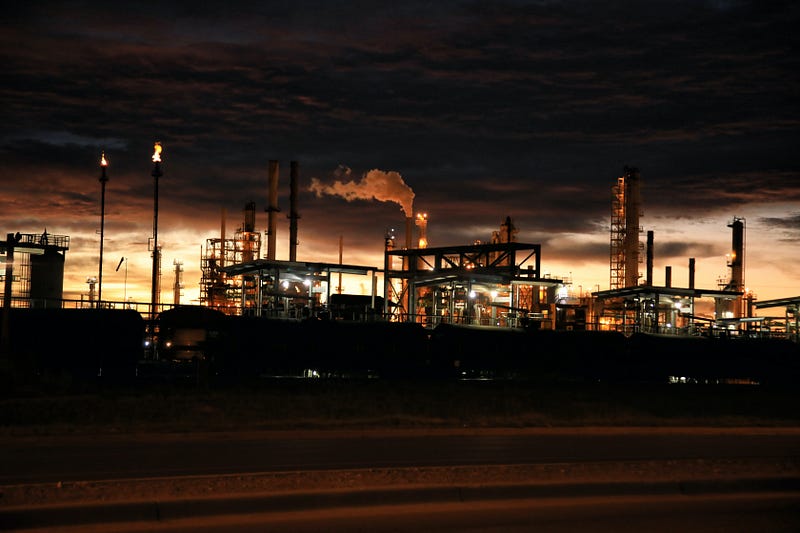The Industrial Revolution's Environmental Impact: A Historical Perspective
Written on
Chapter 1: Introduction to the Industrial Revolution
The Industrial Revolution, which unfolded from the 18th to the mid-19th century, marked a transformative era that reshaped human society through innovations in technology, economic shifts, and widespread urbanization. While this period ushered in significant advancements, it also left an indelible mark on the natural world, resulting in severe and lasting environmental consequences that continue to resonate today. This narrative will examine the explicit impacts of the Industrial Revolution on our ecosystems and environment.

Chapter 2: Urbanization and Its Effects on Nature
The Shift to Urban Centers:
During this era, a significant migration occurred as individuals moved from rural areas to burgeoning industrial cities. This urban expansion led to encroachment into natural habitats, resulting in the displacement and, in some cases, extinction of various plant and animal species. The demand for timber and land for urban development drove deforestation, profoundly disrupting ecosystems that had achieved a delicate balance over centuries.
Section 2.1: Biodiversity in Decline
The consequences of deforestation extend beyond mere landscape alteration; it also triggers a dramatic loss of biodiversity. Numerous species that rely on forest habitats face survival challenges as their environments vanish. The extinction of certain plants and animals, some of which may hold ecological or medicinal significance, underscores the profound impacts of industrial expansion.
Chapter 3: Pollution from Industrial Growth
The Dark Side of Industrialization:
Coal became a primary energy source during the Industrial Revolution, fueling steam engines and factories that spurred economic progress. However, the combustion of coal released substantial pollutants, including sulfur dioxide and particulate matter, resulting in notorious smog that enveloped heavily industrialized cities like London. This pollution led to respiratory issues and diminished quality of life, highlighting the hidden costs of industrial advancement.
Section 3.1: Contamination of Water Sources
Industrial activities also severely impacted water quality, as factories often discharged waste into nearby lakes and rivers. The introduction of industrial chemicals into these water bodies had catastrophic effects on aquatic life and compromised the availability of clean drinking water, creating pathways for disease to spread, affecting urban and rural communities alike.

Chapter 4: Agricultural Transformation
Adapting Farming Practices:
The transition to an industrialized society necessitated changes in agricultural methods to cater to the needs of a growing urban population. Intensive farming practices, often reliant on machinery and chemicals, promised greater yields but led to soil degradation, erosion, and nutrient depletion. The long-term effects included diminished agricultural productivity and challenges in maintaining soil fertility for future generations.
Section 4.1: Monoculture and Its Consequences
As traditional agricultural landscapes transitioned to industrial farming, the focus on monoculture—growing a single crop over extensive areas—greatly reduced biodiversity within agricultural systems. This shift heightened the vulnerability of crops to pests and diseases and disrupted essential natural processes, such as pollination, impacting food systems and communities.

Chapter 5: Environmental Alterations
Transformations of Natural Landscapes:
The development of railways, roads, and canals was crucial for transporting goods and raw materials during the Industrial Revolution. However, this infrastructure often necessitated significant alterations to the natural environment, including leveling mountains and rerouting rivers. These changes led to the loss of unique geological features and disrupted natural water flow patterns.
Section 5.1: Habitat Fragmentation
The expansion during the Industrial Revolution also caused habitat fragmentation, as natural landscapes were sliced apart by roads, railways, and urban developments. This fragmentation isolated populations of various species, making it challenging for them to migrate, reproduce, and access vital resources. The ecological repercussions include diminished genetic diversity and increased susceptibility to environmental changes.

Chapter 6: Conclusion: Lessons Learned
The Industrial Revolution propelled humanity into a new age of progress, fostering larger economies, improved societies, and technological innovations that enhance our daily lives. However, the environmental costs of this progress were significant. The legacy of the Industrial Revolution serves as a powerful reminder of the necessity to balance innovation with ecological stewardship. As we face modern challenges, it is crucial to learn from the past to avoid repeating the ecological damage inflicted upon nature.